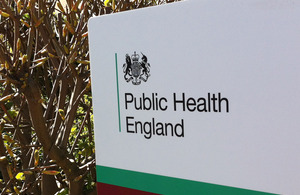Identifying familial hypercholesterolaemia (FH) in primary care
A systematic audit within the Medway Clinical Commissioning Group significantly increased recorded prevalence of FH

Summary
We demonstrated that it is possible to identify patients with clinical familial hypercholesterolaemia (FH) from their primary care record and, between 2011 and 2019, improved the recorded primary care prevalence from 1 in 750 to 1 in 325.
Background
FH is a relatively common genetic disorder, but despite the 2008 NICE guideline recommendations, by 2011 there had not been a significant improvement in diagnosis of FH in England. We sought to demonstrate that patients could be systematically identified from their primary care record.
What was involved
We ran an audit across all 53 practices in Medway Clinical Commissioning Group (CCG) (population 262,030 in Oct 2011) using Audit+ software from Informatica systems. This is currently free to practices via the national GP Systems of Choice (GPSOC) arrangements.
This enabled us to determine a baseline prevalence of recorded FH, and identified patients who had had cholesterol above 7.5mmol/l, (the level where a patient should be assessed against the Simon Broome Criteria or Dutch Lipid Clinic Network score ) and had not had a recording of being assessed.
The audit provided clinical prompts, practice level reports of named patients and a CCG view of numerical performance at practice level, so that support could be offered.
What went well
In 2 years, we improved the recorded prevalence of FH to 1 in 450 just by running the audit and sharing and discussing practice data. Practices were not paid for this activity.
Some practices found it difficult to check patients against the Simon Broome criteria, mainly due to other time pressures and workload. A nurse was then provided to practices for a 9 month period to support practices. This produced a further improvement in recorded prevalence to 1 in 357.
Since then, recorded prevalence has continued to improve and is now 1 in 325 (January 2019), with no additional interventions, just by making it easier for clinicians to think about the issue and identify patients where a diagnosis should be considered.
What could be improved
We have not had access to genetic testing. Once this becomes available the aim would be to refer patients with a clinical diagnosis for genetic testing. If our baseline prevalence of 1 in 750 is similar to other parts of the country then if we just refer the patients we are already aware of, that should enable us to meet the ambition for FH in the NHS Long Term Plan. This is if we accept that some will have already had a genetic test and some may need a review of their diagnosis.
Next steps
The NHS Long Term Plan makes a firm commitment to improving the genetically confirmed detection of FH from 7% to 25% by 2024 through the NHS genomics programme.
To support the case finding of patients at risk, a national CVD prevention audit for primary care is in development. This will support the identification of patients where a diagnosis of FH should be considered.
Changes to the ways GPs work and a new Primary Care Network contract with additional support from pharmacists and nurses will also help. However, the changes to GPs’ working methods are ambitious and there is recognition that they need phasing in, with the CVD requirements coming in 2021 to 2022. This may be too late to fully support the achievement of our ambition for FH detection.
As we have shown, and NICE recognise, it is possible to identify systematically those who should be considered for a diagnosis of FH from the information already held in the primary care record. Now that we will have access to genomic centres across the country, there should be no barrier to referral for genetic testing.
When using the Primary Care Network Pharmacists or nurses, we focus on patients:
- who already have a clinical diagnosis or
- patients over 30 years old who have ever had a cholesterol reading above 9mmol/l without a secondary cause
We can refer these directly for a genetic test, provided that set eligibility criteria are met for the test. Then we can, with little extra work, identify new index cases and cascade to test relatives.
We now have all the elements in place to case-find those where a diagnosis should be considered and refer them for genetic testing.
Undiagnosed FH should become a thing of the past, as should the tragic deaths of FH patients in their teenage years.
Based on a prevalence of 1 in 250, an average primary care network of 30,000 to 50,000 patients will have 120 to 200 FH patients.
Further information
Dr Peter Green, Clinical Chair, NHS Medway Clinical Commissioning Group